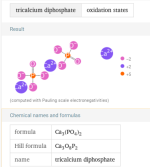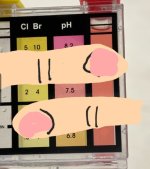There are different forms of calcium scale.
The most common one in pools is Calcium Carbonate. That's the one what the CSI is about, which is an index quantifying how much calcium (CH) and carbonate (generally, the higher TA, the higher the carbonate content) are in the water. If there are too many calcium and carbonate ions in the water, then they will more likely combine and form scale. If there is not enough calcium and carbonate in the water, the water can dissolve them from plaster surfaces - the calcium and carbonate content needs to be balanced, or in other words the CSI should be neither too big (scaling risk) not too negative (plaster dissolving risk).
But there are also other forms of calcium scale, of which calcium phosphate and calcium sulphate can be of relevance for pools. That's why we suggested the fizz test (only calcium carbonate fizzes up in acid, the other two either don't react at all or just slowly dissolve) and to test for sulphates and phosphates.
Carbonate or phosphate are not the cause of CH being too high, they are independent parameters. But if CH and carbonate are both too high, then calcium carbonate scale can form, and if calcium and phosphate are too high (very high in this case), then calcium phosphate scale can form.
In your case, the scale has nothing to do with water chemistry parameters, the scale is coming through plaster defects from underneath.




